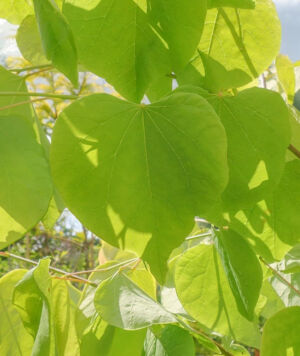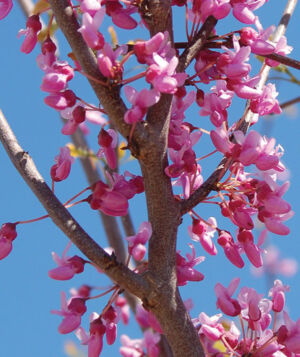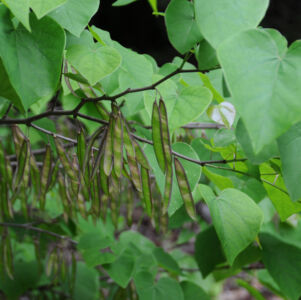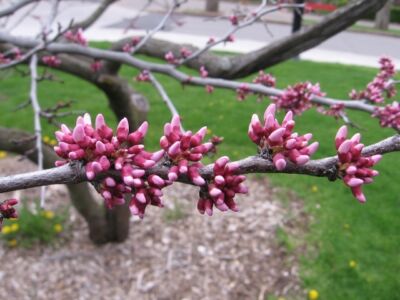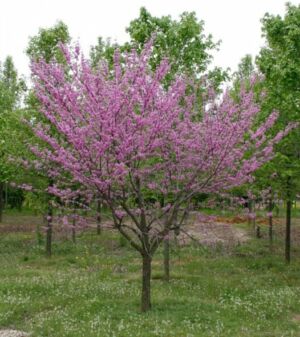Ceris canadensis- Eastern Redbud
Description
General: A small tree with the trunk divided close to the ground forming a spreading, rounded crown with ascending branches. Grows 20-30 in height with a slightly larger spread.
Leaves: Broad, simple and cordate (heart shaped), 3-5” high and wide. New growth emerges a reddish purple changing to a dark green in the summer and finally a yellow green in the fall.
Flowers: Reddish purple buds open to a rosy pink color, ½” long from March to April. These flowers appear on the bare branches of old wood before the leaves emerge.
Fruit: A reddish green turning brownish black pod 2-3” long that persists through the winter.
Attributes: Can be used as a single specimen or in groupings along shrub borders. Grows on the woodline in the wild and is really effective when naturalized for early spring color.
Culture
Hardiness: Zones 4 to 9.
Growing Conditions: Prefers moist, well drained, deep soils but will tolerate a range of soil types besides standing water. Ph adaptable. Full sun to part shade.
Maintenance: Canker, verticillium wilt and leaf spots. Pruning not usually necessary.
Transplanting: Transplants well if not under stress, during dormant periods or periods of cool weather to moist, well drained soils.
Our Experience
Experience at Great Hill
We currently feature Cercis canadensis ‘Forest Pansy’ (a red leaved redbud cultivar) in our sculpture garden. Redbuds are exquisite in early spring and certainly worthy of specimen placement on the landscape. This tree does best in a sheltered location however as it does not respond to stress well. It requires supplemental watering during periods of stress and doesn’t respond well to injury. With regular watering, fertilizing and deadwood removal you greatly decrease the likelihood of disease development.
2023
Cercis Bloom Data 2023
| Plant Name | Bud Break | Full Bloom | Bloom Drop |
|---|---|---|---|
| canadensis 'Covey' | April 19 | May 15 | May 27 |
| canadensis 'Forest Pansy' | April 20 | May 16 | May 26 |

